View from the Hill 11th August 2019
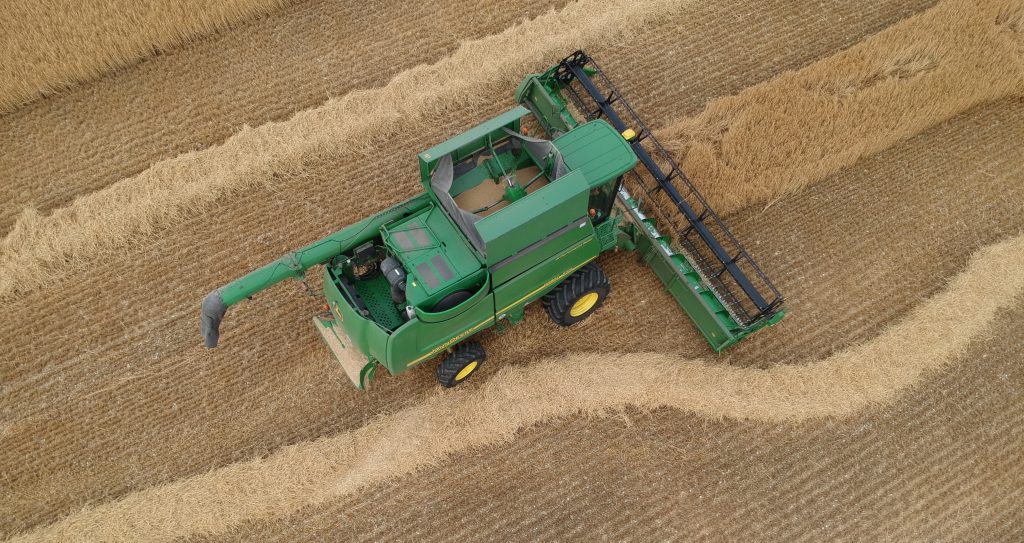
Harvest started on Monday July 15th, the Maris Otter winter barley turned out well, yield and quality are good, so it will head for the breweries later in the year. Straw yield was good too, so good that it took a day or two to fully dry out before baling, so caught the rain that swept through that week, and it was on the ground for a week before the contractor was able to bale it.
After the barley we were straight into the oilseed rape, which has been very variable this year, after suffering from a very dry seedbed last autumn, and wave after wave of attack from flea beetle, it could be said that we were lucky there was any crop to harvest at all. Many farmers ripped up failed rape crops before winter and resowed with something else. Most of ours scraped through and only in one field did we have any patches with nothing but weeds. This produced the worst yield, below 2 tons per hectare, whereas the best, for reasons I cannot fathom, produced just over 4t. The average at 3 tph is the worst we have had since 2004, our running average is around 4t, which we need to make a reasonable margin.
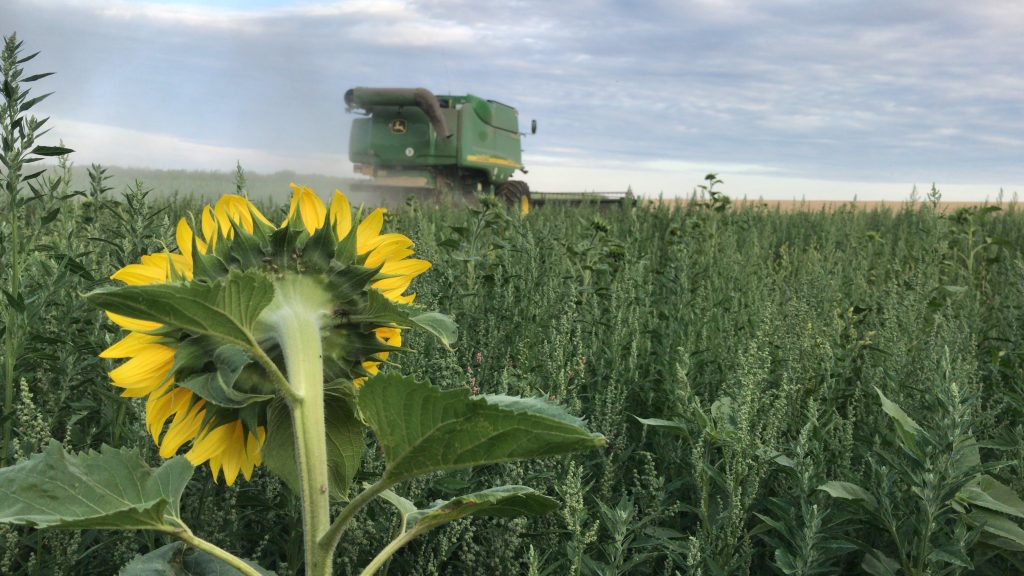
After the rape, which was a bit stop/start with rain breaks and breakdowns, we launched into the spring barley, which, like last year has suffered from the lack of moisture through its short growing season. We tried a new variety on a third of the area, which out-performed the Propino we have been growing for several years by a good margin, so it looks like we will be dumping it for Planet next year. Where it will go after 31st October is anyone’s guess, but I said enough about that last month!
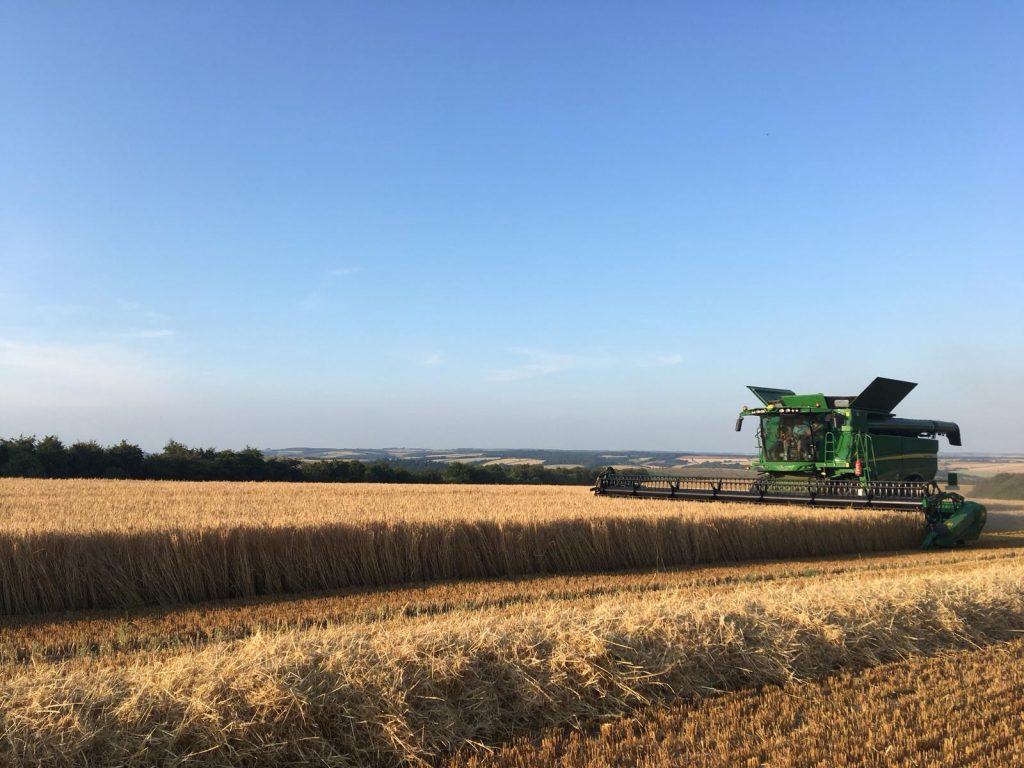
Once again we have had the fun and excitement of a demonstrator combine to play with over the last few days. This is a John Deere of similar size to our old one, now in its 13th year, though its header is 5ft wider. The new one is packed with gizmos, aside from the autosteering by GPS, which is rather old hat now, an impressive feature is cameras in the works of the combine, taking good quality still pictures every second, which show you what the grain sample looks like before it goes to the grain tank, which is a great help with setting the machine up accurately. Our local dealer Colin Smart is of the firm opinion that we should change our combine this year (he has been saying this since it was 5 years old). We will see. One night when threatened with rain we had both combines running in neighbouring fields, with a trailer each.
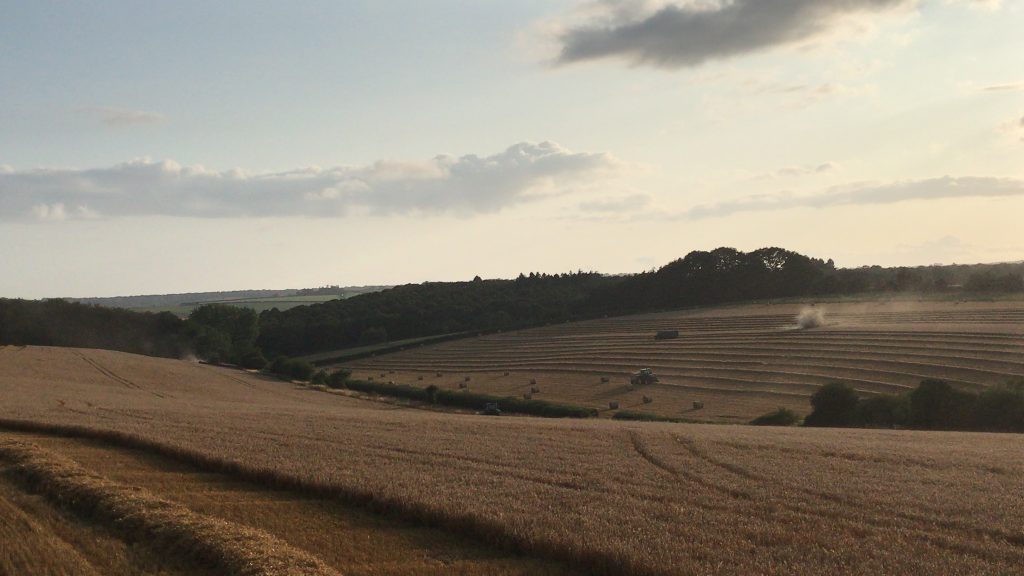
How many combines and tractors in this picture,? Look carefully.
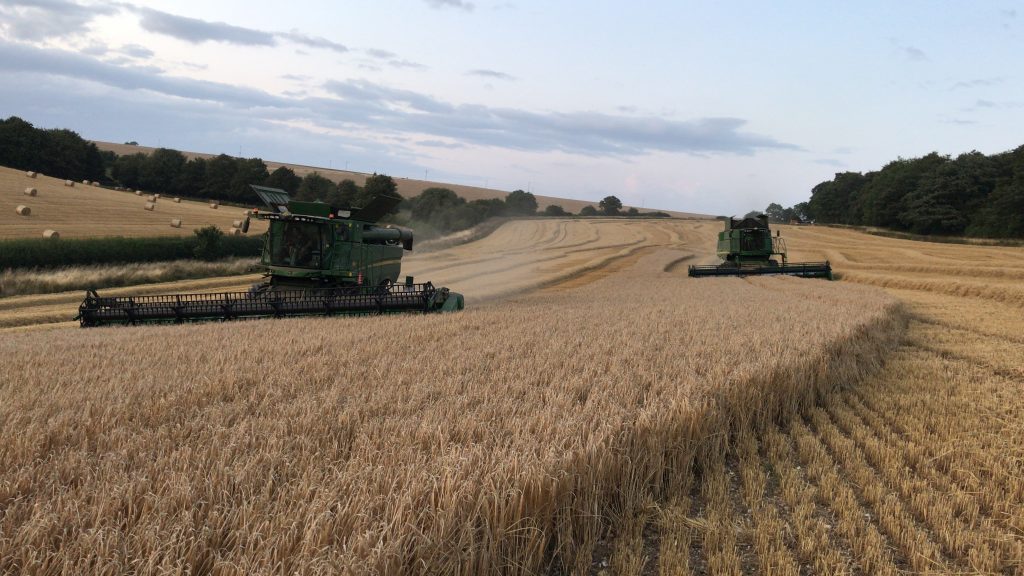
Two combines together finishing off the spring barley trying to beat the rain.
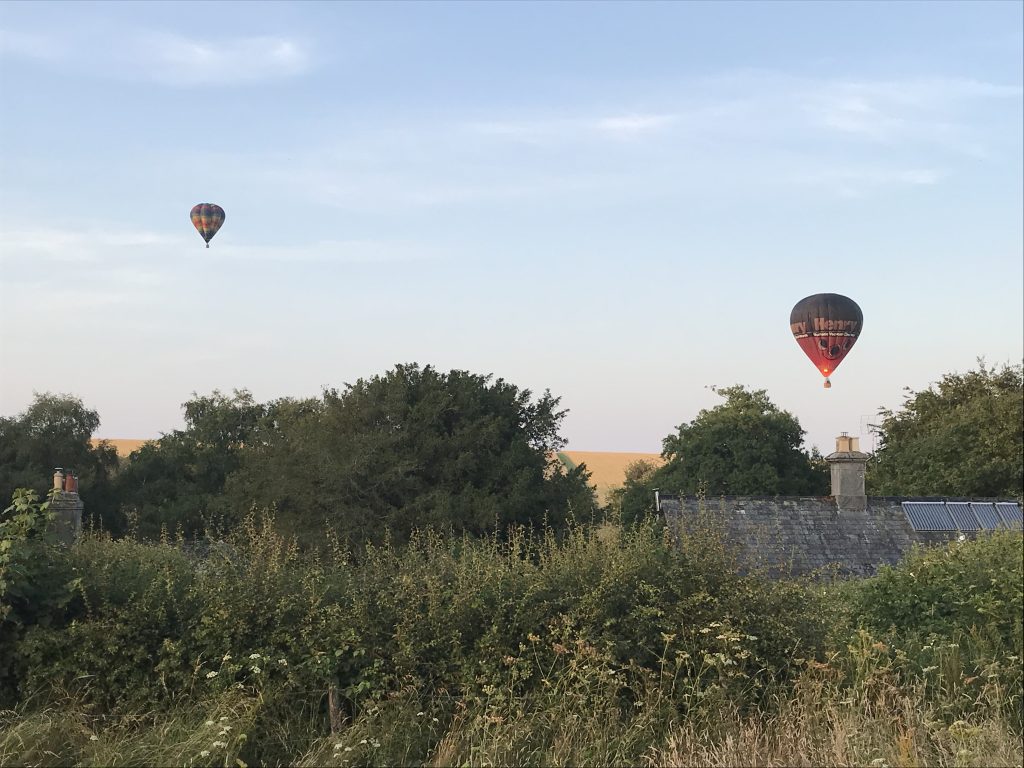
One evening while we were cutting the winter barley, the unmistakeable sound of gas burners broke through the background noise of the grainstore, and drew our attention to the 2 hot air balloons which were buzzing our house. Such a peaceful and glorious way to see the countryside, until the burners are lit, these balloons were drifting up from Winterborne Stickland and heading for Durweston, at one point we were nearly close enough to have a chat with the passengers.
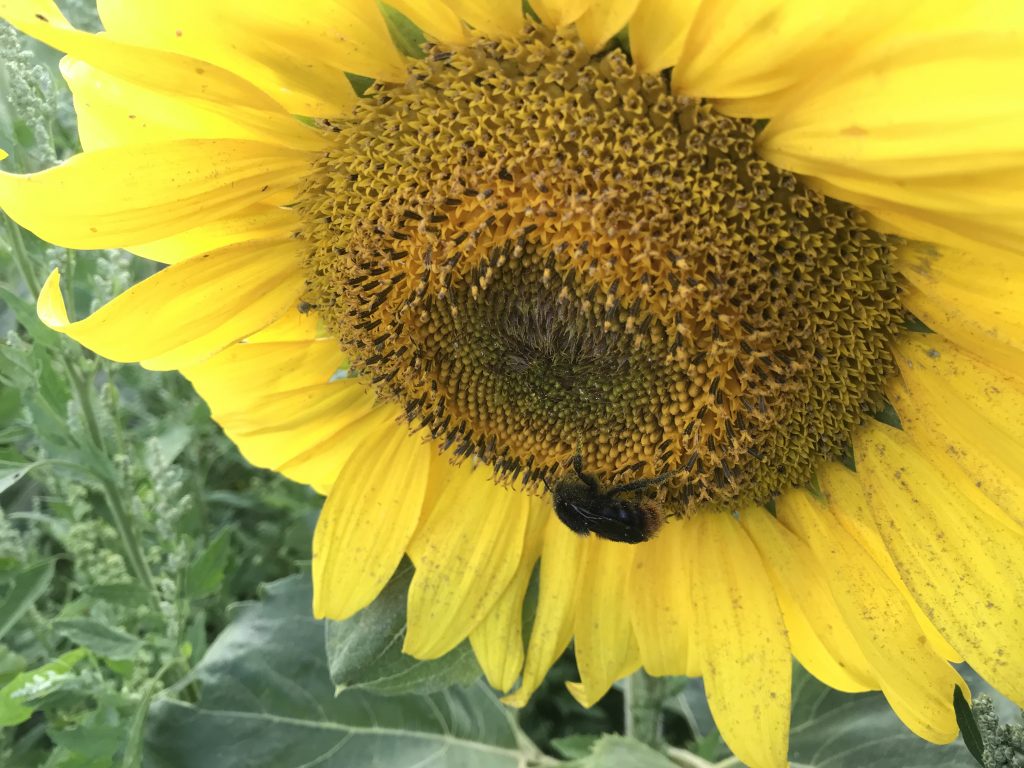
A Buff-tailed bumble bee feeding keenly on a sunflower on one of our bird food margins. Its hairy legs are thick with pollen, perfect for fertilising the next flower.
A new app on my phone has proved very useful, called Picture This, it is very good at identifying plants from the flower or the leaves, it can even do trees and grasses. Beware if you try it, it is quite hard to avoid being sucked in to the rather steep £20 annual sub after the 7 day free trial period ends. It has however introduced me to such lovely names as Tormentil, Burnet’s Saxifrage, and Squinancywort.
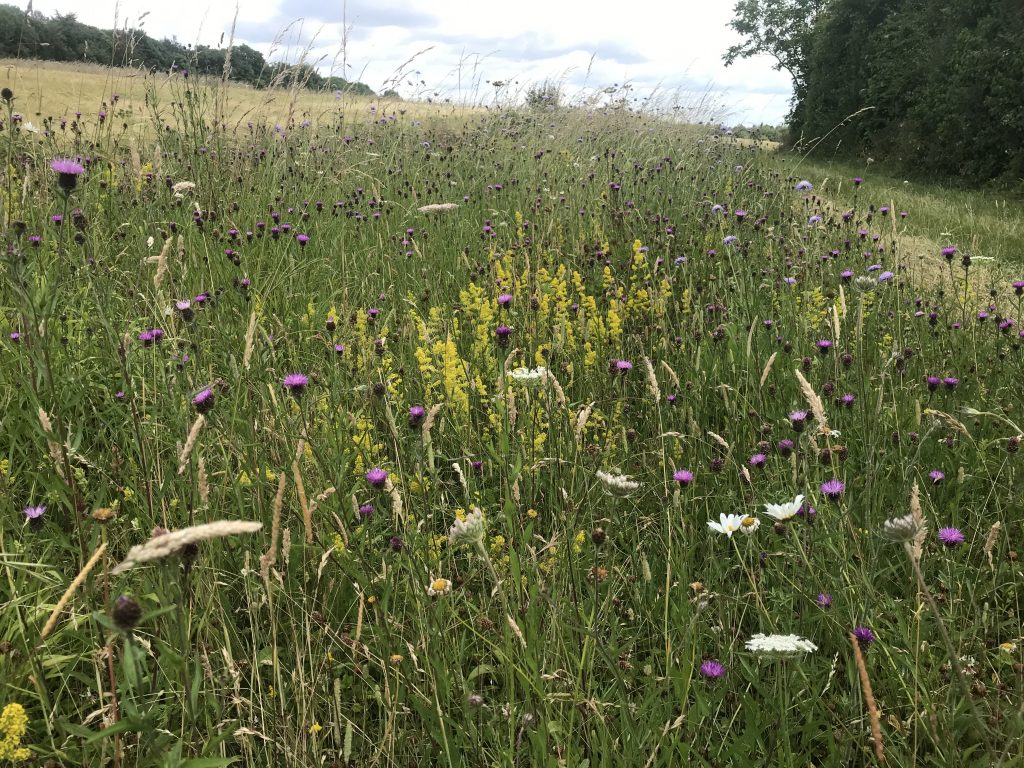
Flower-rich field margins packed with Knapweed, Wild carrot, Lady’s bedstraw and Common Scabious.
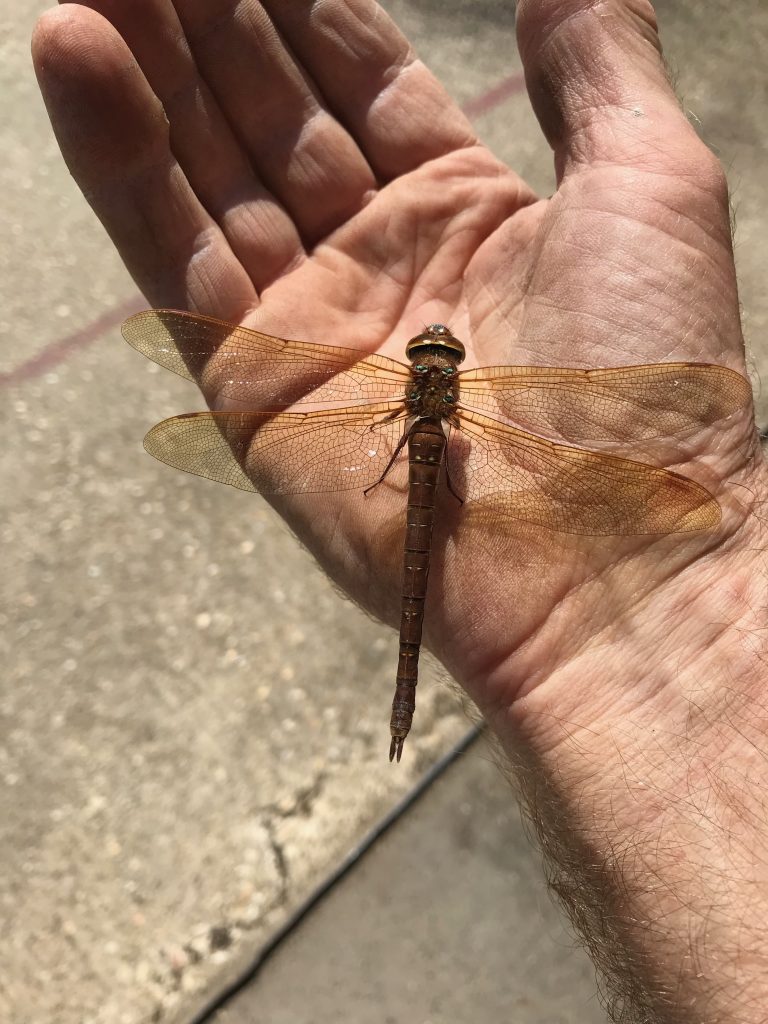
One day I found this lovely creature, it had ended up lying on its back in the grainstore, who knows how it ended up there, but after I carried it around on my hand for a few minutes, where it clung on tight, it suddenly flew off. The beautiful blue markings and intricate wings mark it as a Brown Hawker female dragonfly.
It seems to have been a great summer for dragonflies and butterflies. Hedgehogs too, we saw three all together on our lawn one night, very exciting.
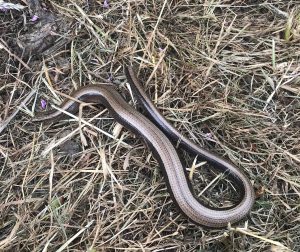
Brendan was unfolding a large tarpaulin one day, before it was to be washed, and inside its folds he found this beautiful slow worm, it didn’t seem to mind being picked up, but didn’t hang around once it was put down, its head was already buried in the undergrowth before I could get a picture.
Back to the harvest story, which keeps us all flat out busy at this time of year. Once the straw bales have been made and hauled, it is time to start preparing the ground for next year’s crops. In some fields we have experimented with sowing cover crops (green manure) and turnips, into standing wheat crops using our sprayer equipped with a 4 spinner distributor, and as we harvest the wheat we find the seeds have managed to germinate and start growing while the wheat was ripening. In other fields we will sow after the crop is cleared, hoping it doesn’t get too late in the season. The theory behind sowing into standing crops is for the small plants to be able to harvest more sunlight while the days are still long.
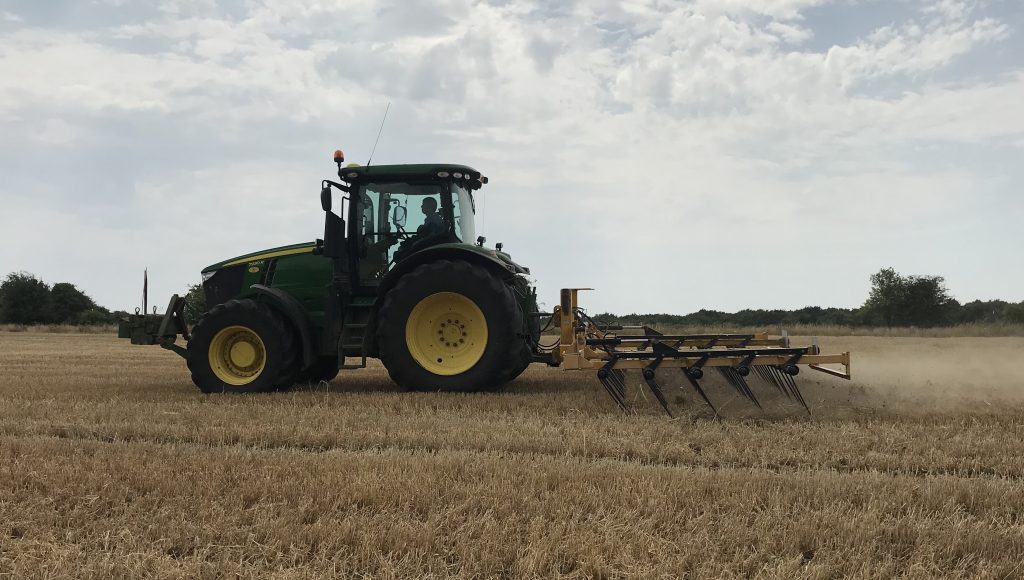
For those fields destined to be sown with harvestable crops, Gary has been out with our newest piece of kit, a stubble rake. The rake scratches the surface of the soil, mixes in and spreads the trash left behind the combine, and encourages seeds to germinate, so we can kill them off before sowing the next crop. (the stale seedbed technique). It is also supposed to destroy slug eggs, hence reducing the threat of grazing by those slimy pests.

You are making me homesick! Can almost smell it
Miss harvest
George, I remember when we used to have rotations, corn, roots, corn, three year lay undersown.
As to your bumper rape crop I also remember one of my less confident growers saying to me, “Jim, I am very worried” and when I asked him why, he replied “I have grown the best wheat crop of y life and I don’t know how I did it.”
Keep the good blogs coming. Jim